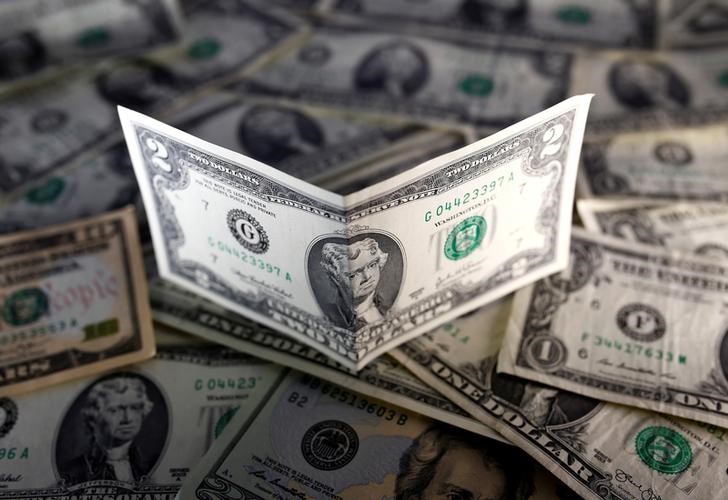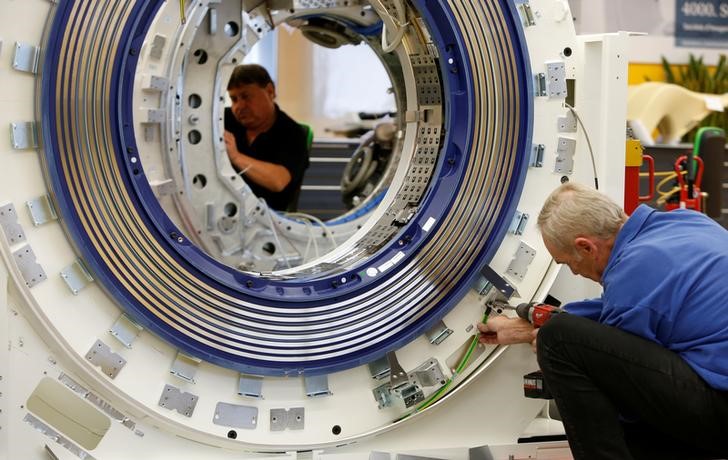By Lucia Mutikani
WASHINGTON (Reuters) - U.S. consumer confidence retreated from a 15-year high in January likely as some of the election euphoria fizzled, but households remained upbeat about the labor market, suggesting that the economy would continue to grow this year.
Other data on Tuesday showed an acceleration in house prices in November, which should further boost household wealth and support consumer spending even as wage growth remains moderate. Consumer sentiment surged in the aftermath of Donald Trump's election as president last November.
The jump was in tandem with a stock market rally as both consumers and investors focused on Trump's pledge to cut taxes and reduce regulations, policy proposals that have been viewed as pro-business and favorable for economic growth.
"The moderation in consumer optimism is likely attributable to a return to normalcy following the typical bounce in confidence that follows a presidential election," said Jim Baird, chief investment officer at Plante Moran Financial Advisors in Kalamazoo, Michigan.
"The bottom line is that the consumer sector is still... poised for further spending growth in the coming months, providing a key support to the economy as a whole."
The Conference Board said its consumer confidence index fell to 111.8 this month from an downwardly revised reading of 113.3 in December, which was still the highest since August 2001. The index was previously reported at 113.7 in December.
While consumers' assessment of current business conditions improved sharply this month, they were less confident about the outlook. Some economists said consumers were likely opting for caution until the Trump administration offers more details on the fiscal stimulus, especially tax cuts.
"The Trump rally effect on consumer's hearts and minds is starting to fade as it is apparent this administration will face a rocky road if it does not tone down its harsh rhetoric," said Chris Rupkey, chief economist at MUFG Union Bank in New York.
"The longer it takes the Trump administration to come out with specific proposals and programs to make America great again, consumers will continue to stay cautious."
The survey's so-called labor market differential, derived from data on respondents' views on whether jobs are plentiful or hard to get, rose to 5.9 percentage points from 3.3 points in December.
This measure, which closely correlates to the unemployment rate in the Labor Department's employment report, suggests that the jobless rate and labor market slack could decline further this year.
The reports were released ahead of the start of the Federal Reserve's two-day policy meeting on Tuesday. The U.S. central bank, which has forecast three rate hikes this year, is not expected to raise rates at this week's meeting.
The Fed hiked its benchmark overnight interest rate in December to a range of 0.50 percent to 0.75 percent.
TRUMP ROILS MARKETS
U.S. financial markets were little moved by the data, with investor attention focused on comments by Trump, which appeared to express concerns about the value of the dollar.
In comments directed to the pharmaceutical industry, Trump said currency devaluation by other countries had increased drugmakers' outsourcing of their production and called on the companies to make more of their goods in the United States.
The dollar fell against a basket of currencies, while prices for U.S. government bonds rose. Stocks on Wall Street were trading lower, with investors continuing to fret over Trump's isolationist policies, including travel restrictions to the United States which sparked protests across U.S. cities and criticism from several corporate leaders.
Other data on Tuesday showed the S&P CoreLogic Case-Shiller composite index of home prices in 20 metropolitan areas increased 5.3 percent in the 12 months to November after rising 5.1 percent in October. While the acceleration in house prices offers a boost to households, it could restrain home sales.
Mortgage rates have risen above 4 percent, while wage growth remains moderate. In a third report, the Labor Department said wages increased 0.5 percent in the fourth quarter after a similar gain in the previous period.
That slowed the year-on-year rate of increase to 2.3 percent from 2.4 percent in the year to September. While the quarterly data continues to show moderate wage growth even as the labor market tightens, anecdotal evidence points to an acceleration amid efforts by companies to retain and attract skilled workers.
Minimum wage increases being implemented by some states are also boosting wage growth. The Fed's latest Beige Book showed wages in some districts were being pushed up "a bit" by increases in the minimum wage and that most districts reported that wage pressures had increased.
The Fed said information from many districts indicated that labor markets were expected to "continue to tighten in 2017, with wage pressures likely to rise."
According to data from job site Glassdoor, wages rose 2.9 percent year-on-year in December, matching the increase in average hourly earnings reported by the government in last month's employment report.
The Atlanta Fed's "Wage Growth Tracker" shows wages increased 3.5 percent year-on-year in December.
"With a near-record job openings and a 4.7 percent unemployment rate, it's unlikely much slack remains," said Andrew Chamberlain, Glassdoor's chief economist.

"While it's true many working-age Americans have left the labor market in recent years, and those sidelined workers may be depressing wages somewhat, we expect wage growth to accelerate during the first half of 2017."
